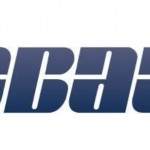The supercar of the skies (which anyone can fly)
The Icon A5 is the new ‘flying car’ concept that everyone is talking about. With its first flight completed on 7 July 2014, it’s had quite a year. Recently, the company invited a group of leading aviation journalists to test fly the Icon A5, with overwhelmingly positive results.
Here are 8 reasons why it’s causing such a stir:
It looks great
There’s no denying the aircraft has very strong visual appeal. There are many other flying car and personal jet concepts in development, but the Icon A5 is a lean, mean flying machine with the good looks to match. It looks like a cross between a light jet and a sports car, and it’s been described as the ‘Tesla of the skies’.
Small in size, big on performance
Flying at top speeds of 110 mph (177 km/h), the Icon A5 weighs around 1000 lbs with a range of 450 miles/ 725 km. It can fly at altitude up to 10,000 ft. But where it’s also big on style it’s small on size, measuring 7 m in length and 2.5 m in height.
So easy – anyone can fly it!
Well, almost anyone. Icon A5 is certified by the FAA in the light-sport aircraft category. You do still need a licence but it’s a SPL (Sport Pilots Licence) which involves just 20 hours of flight training (less than half that of a normal pilot’s licence). Icon has said they want to democratise private aviation and get people flying, stating that 40% of orders to date (more than 1500) are from non-pilots.
You can park it in your garage
The Icon A5 has wings measuring 10.36 metres, but which fold up and can fit in your garage, and be towed on a trailer. As well as aviation fuel, it also runs on premium unleaded fuel that you’d find at your local petrol garage.
It’s good enough for Google…and Boeing
Eric Schmidt, chairman of Google, is one of the investors known to have supported in the $25 million funding round for Icon back in 2011. Another named investor is Phil Condit (former CEO of Boeing).
It can land on the water
The aircraft is amphibious, meaning it can land both on water and on runways. Recently on the Hudson River in New York, it caused a stir when firefighters were called to an assumed emergency landing. But it was just the Icon A5, using the river to show off its impressive dual versatility in a test flight.
It has impressive safety features
It has a remarkable safety feature that means that the aircraft remains safe and controllable, even if the pilot was to stall. It has a spin-resistant airframe, the first to meet full FAA standards for this. This makes it much more difficult for aircraft to enter a spin, and much easier to recover.
Most important for many ex military pilots like myself, the A5 also has an AoA gauge (Angle of Attack). In any aircraft, from military jet to airliner, the AoA gauge is the most important instrument. Your angle of attack informs pilots how the wings are performing in any stage of flight and is vital when other electronic instruments fail. And to top it off, there is also an optional rocket-powered parachute to get you out of trouble. The designers at Icon have obviously have thought about safety from the beginning of the design process.
It costs less than a Ferrari
The price of the Icon A5 is $197,000, which is less than many supercars. It’s also being compared to a Tesla, and the Icon A5 is just $50,000 more that the Tesla Model S. This makes it a viable option as a personal jet, and for those that want the ultimate flying car in their garage. It’s being marketed (and FAA regulated) as a ‘sport’ plane, and will therefore have the crossover appeal to those that love sports cars. (For more jet vs car comparisons, see F1 car vs Gulfstream ).
Although with the orders for the Icon A5 mounting up, there is now a waiting list until 2019. So the race is on to be the first on the block to own one.
PrivateFly offers a network of 7,000 different aircraft, based globally. For advice on which private aircraft is right for you, contact us or call our 24 hr flight team on +44 (0) 1747 642 777
Related content



